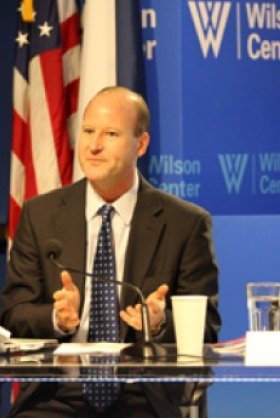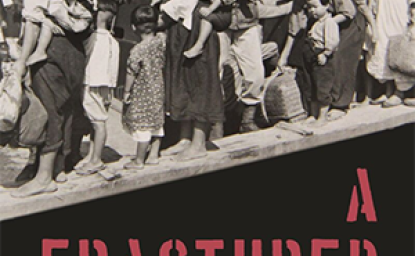Russian Citizenship: From Empire to Soviet Union


“Imperial Russian attitudes toward citizenship were less xenophobic and isolationist and more similar to European attitudes than has been previously thought” said Eric Lohr, Susan Carmel Lehrman Chair of Russian History and Culture at American University. At a 25 March 2013 discussion of his second book, Russian Citizenship: From Empire to Soviet Union, Lohr argued that modern Russia could learn much by studying its historical policies towards migration, citing a dearth of scholarship on the subject to explain his motivation for researching Russian citizenship.
Lohr explained that, in the course of researching and writing his book, he found two basic themes. The first was that there was great continuity in Russian immigration policies over centuries of pre-revolutionary history. Lohr characterized Russian policy as one of “attract and hold.” In contrast to modern perceptions that the Russian Empire was isolationist, Russia was actively seeking out foreign groups to immigrate and settle in Russia. He traced this policy to the Muscovite era, when Russia made “attempts to draw military servitors and people with expertise in economic affairs into the Empire.” This policy of targeted immigration to address specific human capital needs continued during the reigns of Tsarinas Elizabeth and Catherine the Great, who “issued invitations to Europeans to come and settle the unsettled steppe-lands of the South.”
These policies went hand in hand with Lohr’s second theme of “modernization and reform.” The Tsar started these efforts with the “great reforms” of the 1860s—particularly the emancipation of the serfs. Lohr contended that the less-studied reform of subjecthood, which began to emerge during the same period, was crucial to the modernization the leaders wished to effect. Thanks to these efforts, foreigners became a privileged stratum within Russian society, explicitly granted all the rights of Russian citizenship, and exempted from mandatory military service, while still able to claim diplomatic immunity. These policies upset nascent Russian nationalist groups, but the regime was “committed to this model of modernization with a large role for foreigners, and stuck with it.”
Lohr made one important caveat to his picture of a liberal migration regime: Russia’s migration regime was indeed modernized during this period, but not without specific ethnic preferences in mind. Lohr pointed out that early on, leadership opted for a differentiated rather than open-door policy. Jews, for example, were encouraged to emigrate at a time when it was very difficult to get any official permission to leave Russia. “In 1892, the Jewish Colonization Association was allowed to open up offices throughout the Russian Empire to give information on emigration to potential Jewish emigrants, and in fact they were deputized to grant exit visas.”
Russia’s differentiated policy also meant that the regime actively sought Slavs abroad as potential return migrants. The governor of the Russian Far East was desperate for what he termed, “reliable populations” to settle his region in the face of growing Asian populations. He arranged to grant immediate subjecthood to Germans and Slavs settling in his region, bypassing the standard 5-year waiting period. While governors in the East sought to attract European and Slav immigrants, governors in the western borderlands were “fighting their demographic battles” to prevent ethnic Russians from emigrating from the region because they “needed their bodies on the ground.”
“So you have an interesting picture emerging,” Lohr said. “You have the Russian regime trying to use citizenship policy to pursue certain population goals on the one hand, and on the other hand you have this modernization drive which would posit a much more open set of policies.” This contradiction is “remarkably similar to the citizenship dilemmas that Russia faces today,” and thus, Imperial Russia’s experimentation is more instructive than anything in recent history, Lohr suggested.
When comparing the issues Russia confronted then to those they face today, a more liberal migration policy emerges as a potential solution to some of Russia’s current population problems. With legal emigration, the “attract” component has become more important than ever for Russia. Yet, then as now, ethnic considerations remain a factor. This explains, in part, why Russia has been “passing out citizenship without any procedures whatsoever, very controversially in Ossetia and Abkhazia” while migrants from Central Asia are viewed with suspicion. And still today, governors of the Russian Far East seek “reliable populations” as Russia struggles with questions of ethnicity and national identity.
Mattison Brady
William Pomeranz, Acting Director, Kennan Institute
Author


Kennan Institute
The Kennan Institute is the premier US center for advanced research on Eurasia and the oldest and largest regional program at the Woodrow Wilson International Center for Scholars. The Kennan Institute is committed to improving American understanding of Russia, Ukraine, Central Asia, the South Caucasus, and the surrounding region through research and exchange. Read more




